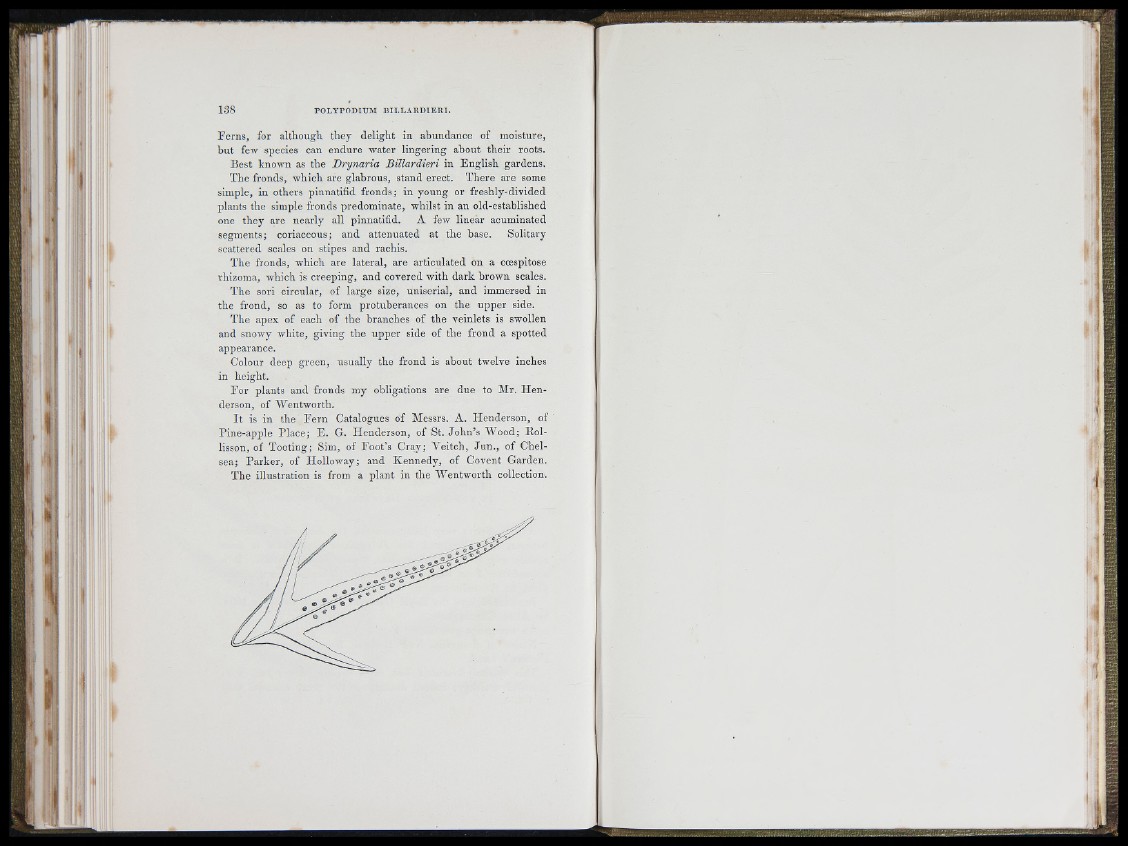
ii i
’ T
F e rn s, for although they delight in abundance of moisture,
b u t few species can endure water lingering about th e ir roots.
Best known as the D ryn a ria B ilia rd ie ri iu E nglish gardens.
T he fronds, which are glabrous, stand erect. T h e re are some
simple, in others pinnatifid fronds; in young or freshly-divided
plants the simple fronds predominate, whilst in an old-established
one th ey are nearly all pinnatifid. A few linear acuminated
segments; coriaceous; and attenuated at the base. Solitary
scattered scales on stipes and rachis.
The fronds, which are lateral, are articulated on a coespitose
rhizoma, which is creeping, and covered with d a rk brown scales.
The sori circular, of large size, uniserial, and immersed in
the frond, so as to form protuberances on the u p p e r side.
The apex of each of the branches of the veinlets is swollen
and snowy white, giving the u p p e r side of the frond a spotted
appearance.
Colour deep green, usually the frond is about twelve inches
in height.
Fo r plants and fronds my obligations are due to Mr. H e n derson,
of AVentworth.
I t is iu the F e rn Catalogues of Alessrs. A. H en derson, of
Pine-apple P lace; E . G. Henderson, of St. Jo h n ’s AVood; Rol-
lisson, of T ooting; Sim, of Eoot’s Cray; Veitch, Ju n ., of Chelsea;
P a rk e r, of Hollow'ay; and K en n ed y , of Covent Garden.
The illustration is from a plan t in the AA^entworth collection.